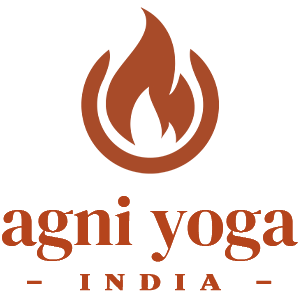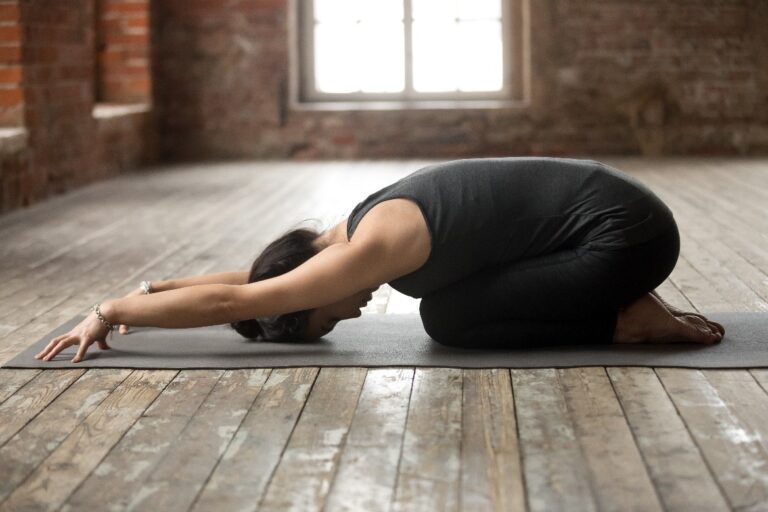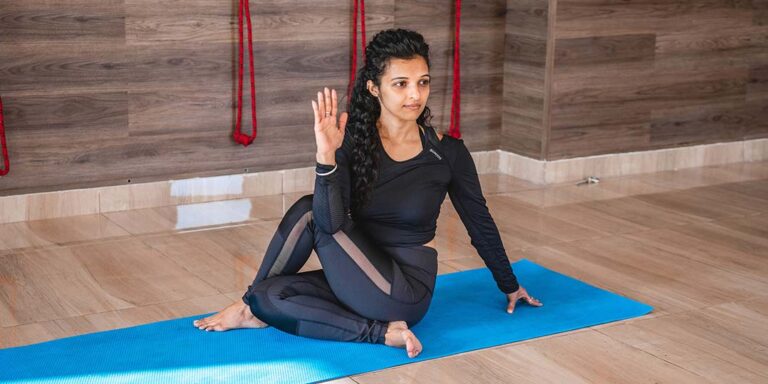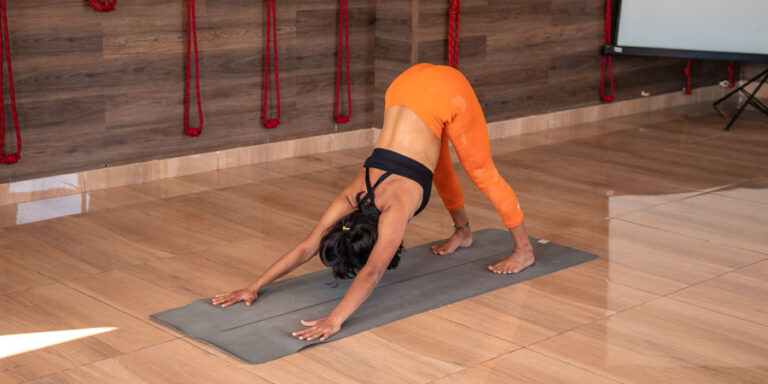What is Ashtanga Yoga and Its Primary Series, Intermediate Series and Advanced Series?
Ashtanga yoga is known as the most athletic of the yoga styles. Founded in India by K. Patthabi Jois in 1948, a classic Ashtanga routine builds flexibility, fitness and focus. It is more than just exercise – it’s mindfulness, flexibility and ultimately a meditation exercise that allows you to nurture your body and mind in an ancient practice that dates back millennia.
If you are prepared to put your mental and physical strength to the test while learning more about yoga, you should consider learning and practicing Ashtanga yoga. This ancient practice has been challenging yogis for decades since it is known as one of the more complex and vigorous types of yoga.
Yoga students who enjoy rigorous and fast-paced yoga where the emphasis is more on cardio exercise, who want to build and strengthen muscles, and who are up for a challenging practice can start with Ashtanga Yoga. However, with practice, this Vinyasa Flow style becomes very grounding and spiritual.
At Agni Yoga India, you will learn Ashtanga Yoga and all its series under our highly knowledgeable and skilled teachers and practitioners who will pay individual attention to you and guide you every step of the way.
What is Ashtanga Yoga?
Ashtanga yoga is a specific sequence of advanced yoga postures that emphasize the flow and breath control between movements. Yoga classes of Ashtanga practice are frequently taught in the Mysore style, where the yoga teacher’s role is to pay individual attention to each student, guide them and make asana adjustments individually with each one of them. The students move at their own pace and perform the poses from memory. If you are a beginner then you would typically start with the Primary Series and progress once you have memorised and mastered it.
The physical asana (yoga posture) aspect of Ashtanga Yoga is known as the Ashtanga Vinyasa Yoga. The ancient practice of Ashtanga Yoga has been passed down through generations of gurus and teachers. Patanjali’s Yoga Sutras which were written more than two thousand years ago contain the most well-known summary of Ashtanga Yoga.
The accurate translation of Ashtanga Yoga is “eight-limbed yoga,” and the path to internal purification consists of eight spiritual practices. These are the 8 limbs or paths described Yoga Sutra of Patanjali:
Yama – Moral and ethical codes, as well as disciplines. Following are the Yamas –
- Ahimsa- Non-violence
- Brahmacharya- Conservation of vital energy
- Satya- Truthfulness
- Asteya- Non-stealing
- Aparigraha- Non-hoarding
Niyama – Living a disciplined life to have a mind and body ready for Yoga. Following are the niyama –
- Saucha- Cleanliness of body and mind
- Santosha- Contentment
- Svadhyaya- Self-study
- Tapas- Discipline
- Ishvara Pranidhana- Surrender to the Divine
Posture – Asana, literally translates to Seat. The postures invoke the stillness of the mind and allow the body to sit for an extended period during mediation.
Pranayama – Breath control. “Prana” represents the vital energy or life force or breath, and “Yama” represents restraint. Pranayama means “extension of the life force.” Pranayama is a breathing practice that involves controlled breathing and breath retention.
Pratyahara – Control or withdrawal of one’s senses. Withdrawing the senses from things that are detrimental to Yoga practice, a shift from the external to the internal world. When the five senses are quieted, the mind can be still.
Dhyana – Meditation. An uninterrupted and continuous concentration in which the meditator begins to come in unison with the object of meditation.
Dharana – Concentration. Focus on a single subject, preferably something spiritual.
Samadhi – Fully integrated supreme consciousness. A trance in which the mind completely merges with and becomes one with the object of meditation. There remains no object of meditation in the deepest state of Samadhi.
Ashtanga yoga is made up of six levels of seated and standing poses, or asanas, that increase in difficulty at every level but don’t vary in form and posture: a primary series, an intermediate series, and four additional advanced series. Each practice begins and ends with five counts of sun salutations.
What is Ashtanga Yoga Primary Series?
The Primary Series of Ashtanga Yoga is the foundation for all subsequent sequences and levels. It may appear to be the easiest, but out of the six levels, it is the most arduous. This is ideally the first series that students learn and practice in Ashtanga Yoga.
It is also regarded as a foundation practice for the subsequent series and forms a part of daily practice. It helps to build flexibility, strength and endurance, while the energy that flows and moves through the Nadis clears all obstacles.
The Ashtanga Yoga Primary Series is a combination of postures that promote both flexibility and strength. It starts with forward bends and progresses to twists, hip openers, and backbends. These postures, as well as the vinyasas that connect them, generate internal heat.
The practice is said to provide substantial benefits on a variety of levels. The primary series mentally strengthens focus, self-control and mind-body awareness. Physically, it strengthens, stretches, and detoxifies the organs.
The Ashtanga Yoga Primary Series is called Yog Chikitsa in Sanskrit. A Vinyasa Flow is a sequence of poses designed to increase physical strength while also developing breath awareness through the practice of Ujjayi Pranayama (victorious breath) and Drishti (gaze points).
Each session begins with 5 rounds of Surya Namaskar A and B (Sun Salutation A and B). The Primary Series comprises four postures –
- Standing Postures
- Seating Postures
- Postures of Finishing Sequence
- The Final Three Closing Postures
Finally, the practice ends with Savasana (Corpse Posture) to let you bring back your breathing and soak the powerful vibrations and energy created during the practice.
Benefits of Ashtanga Yoga Primary Series
The primary series is a form of healing practice. It resets the body, allowing you to work at a deeper level. Internally, the postures in this series focus on your digestive system and balance the sympathetic and parasympathetic nervous systems.
Each posture improves blood flow to specific muscles. This softens and makes them more flexible. This circulation also helps to flush out the organs. It also makes stale energy and toxins move.
What is Ashtanga Yoga Intermediate Series?
The Ashtanga Intermediate Series or the second series is known as Nadi Shodhana in Sanskrit. It means Nerve Cleansing because of the emphasis on the backbend asanas.
The postures in Intermediate Series involve deep backbends and inversion (legs-over-head). These postures improve and maintain suppleness and flexibility of the spine while also opening the energy channels allowing Prana to flow freely.
Many postures in the Ashtanga Yoga intermediate series are built directly on the patterns, strengths and openings practiced in the primary series. And, just as we progressed through the primary series, we approach each posture in the intermediate series one at a time.
There are 41 asanas in the Intermediate series alongwith Vinyasa sequence. The essential postures in Intermediate Series are –
- Backbends – Traditionally, it is believed that backward bending conquers fear, while forward bending conquers the ego. Therefore, striking a perfect balance of mind. The Intermediate Series begins with several back-bending postures while lying prone (strengthening the back muscles) while kneeling (deepening back bends) and finally while sitting (lengthening of the spine).
- Counterbalance – After back bending, a counterbalance for the spine and 2 twisting postures for neutralizing the spine are performed to prepare our body to move from deep back bending to deep forward bending.
- Leg behind the head – These postures are done while seated, lying supine and standing while bending forward to facilitate leg movements.
- Inversions with Arm Balancing – Detoxes internal organs and increases strength and confidence. It also includes a few calming postures and headstands.
Benefits of Ashtanga Yoga Intermediate Series
Backbends in the intermediate series can help with the strengthening of the spine and other internal organs if approached mindfully, with bandha awareness, and with the proper technique, which must be mastered first in the primary series. The ease with which you can move through your practice, with a steady and controlled breath and a certain effortless quality, is an indication that you are ready to move from Primary Series to Intermediate Series.
What is Ashtanga Yoga Advanced Series?
The Advanced Series of Ashtanga Vinyasa Yoga is the third series in a six-part series, also popularly called Advance A. The Advanced Series is known as Sthira Bhaga or Divine Stability and is practiced in a group of four stages – A, B, C and D.
This series incorporates the practice in a way that necessitates greater endurance, flexibility, and humility. You can progress to the Advanced Series only after you have learnt and perfected the Primary and Intermediate Series.
The Advanced Series enhances your Ashtanga yoga skills by developing your breathing, postures, and Drishti (gaze). At this point, your body must be extremely strong and flexible to learn and practice advanced postures daily.
Ashtanga yoga asana practice begins with two variations of the Sun Salutation and a sequence of standing postures and it concludes with the closing sequence. In between, the yogi does one of six increasingly difficult series.
The Advanced Ashtanga yoga series is built on the Primary and Intermediate Series. The emphasis remains on energy flow, with increased emphasis on flexibility, strength, and concentration. The series directs the yogi toward the ultimate aim of self-realisation.
The third series includes arm-balancing poses that require the yogi to practice the postures with gravity to maintain body stability. Ashtanga yoga’s third series also includes challenging backbends. Backbends stretch the spine and open energy channels.
Ashtanga Yoga Advance Series A
The Ashtanga Yoga Advance Series A primarily focuses on arm balancing poses that require yogis to be mindful of their core muscle strength. This series’ poses are intense and encourage stability while also ensuring that the flow of energy is used efficiently.
Ashtanga Yoga Advance Series B
The Ashtanga Yoga Advance Series B includes twists not only of the spine but also of the shoulders, hips, knees, arms, and feet, as well as some backbends.
Ashtanga Yoga Advance Series C
The Ashtanga Yoga Advance Series C focuses on various handstand vinyasas and other inversions along with the postures of Primary Series, Intermediate Series and Advance Series A and B.
Ashtanga Yoga Advance Series D
Ashtanga Yoga Advance Series D is the most advanced posture sequence which is highly structured. It begins with two different forms of sun salutations and a standing posture sequence before concluding with the same closing sequence. The postures in this series are not universal. This highly advanced series includes difficult backbends, handstands, and other inversions that require higher flexibility and balance.
Benefits of Ashtanga Yoga Advance Series
Apart from all the physical benefits of losing weight and appearing leaner, the benefits of the Ashtanga Yoga Advance Series can be felt deep inside. Its advantages include enhanced health and well-being, increased immunity and disease resistance, and making your body stronger and more flexible.
It also improves concentration and focus, as well as your mindfulness and self-awareness. It alleviates stress and anxiety while opening the heart and mind to gratitude, wisdom, acceptance, empathy and compassion.
Bottomline
At Agni Yoga India, our practice environment and spaces are peaceful and calm, encouraging deep relaxation and optimism. Whether you want to learn Ashtanga Yoga from the beginning or are looking to advance yourself, our experienced yoga teachers and practitioners will make your learning smooth and easy.
Understand that each body is unique and responds differently to any form of physical exercise including yoga. However, you can build endurance and strength with practice, time and discipline. It can be hard to ascertain when it is time to challenge yourself to move to the next level of your Ashtanga Yoga practice. Assess yourself about how your practice is working for you, and be open to trying new things. There is no right or wrong way of practicing yoga, but if you move slowly and mindfully, you will find your way.
Related Posts:
- Yoga Poses for Weight Loss: The Top 10 Advantages
- Yoga for Diabetes. How Stress Causes Diabetes.
- 5 Yoga Poses that give you relief from back pain
- 10 Benefits of daily yoga practice
- Why choose yoga as a career?
- Yoga Teacher Training vs Yoga Retreat. What should you choose?
- Methods to boost Endurance during Aerobic and Anaerobic Exercises.
- Yoga Teacher Training in Rishikesh India
- Why Join Agni Yoga India for Yoga Teacher Training in Rishikesh India?
- 500 Hour Yoga TTC in Rishikesh
- How to Dress Correctly for a Great Yoga Session? A Beginners Yoga Outfit Guide
- 15 Standing Yoga Poses That Will Build Full-Body Strength & Balance
- What is Ashtanga Yoga and Its Primary Series, Intermediate Series and Advanced Series?




